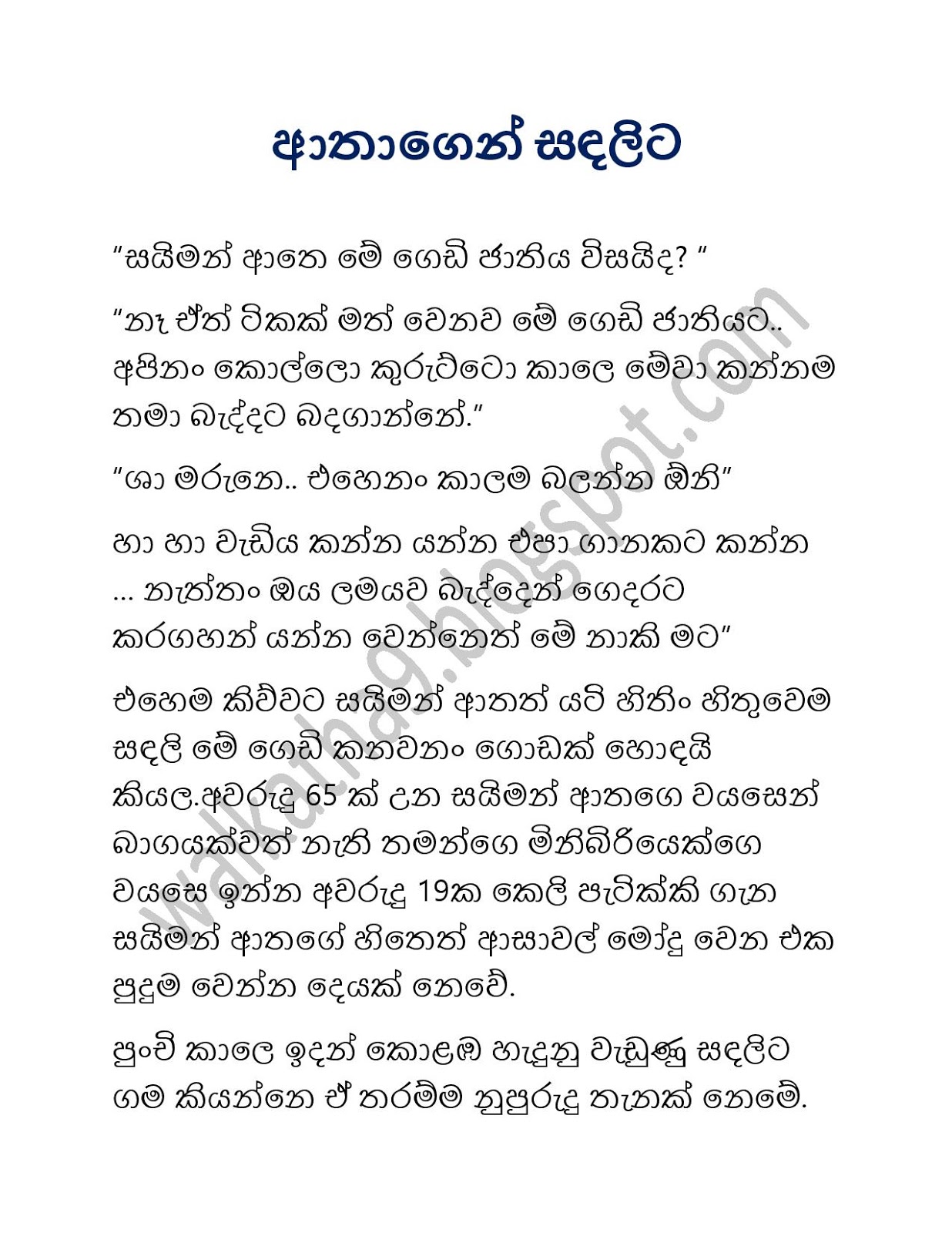Sinhala walkatha is a fascinating aspect of Sri Lankan culture, deeply rooted in the traditions and stories of the Sinhala people. This rich art form encompasses various elements including folklore, storytelling, and even performance arts, all of which reflect the vibrant heritage of the island nation. From ancient times to the present day, Sinhala walkatha serves as a vessel for conveying moral lessons, historical events, and the unique worldview of the Sinhala community.
As we delve into the world of Sinhala walkatha, we uncover not only the narratives that have shaped the identity of the Sinhala people but also the artistic expressions that have evolved over generations. The stories told through walkatha often include a blend of humor, drama, and social commentary, making it a captivating form of entertainment and education. The beauty of Sinhala walkatha lies in its ability to engage audiences while preserving the language and cultural nuances of Sri Lanka.
This article aims to explore the various dimensions of Sinhala walkatha, answering pertinent questions about its origins, significance, and the impact it has on contemporary culture. From its historical roots to its modern interpretations, Sinhala walkatha is more than just storytelling; it is a celebration of Sri Lanka's rich cultural tapestry.
What is the Origin of Sinhala Walkatha?
Sinhala walkatha has its roots in the rich oral traditions of the Sinhala people. Historically, these stories were passed down through generations, often performed by skilled storytellers known as "walkathawadi." This art form has been influenced by various factors, including Buddhism, colonialism, and other cultural exchanges. Each narrative carries with it the essence of Sri Lankan life, from the struggles of daily existence to the triumphs of the human spirit.
How Does Sinhala Walkatha Reflect Cultural Values?
At its core, Sinhala walkatha is a reflection of the values, beliefs, and social norms of the Sinhala community. The stories often highlight themes such as family loyalty, respect for elders, and the importance of community. Through humor and drama, these narratives serve to reinforce cultural teachings and instill moral values in younger generations.
What are the Key Elements of Sinhala Walkatha?
Several key elements define the structure and presentation of Sinhala walkatha:
- Storytelling: The art of narrating a tale, often engaging the audience with vivid descriptions and expressive language.
- Characterization: Characters in walkatha often symbolize various societal roles, making the stories relatable and engaging.
- Humor: A significant aspect of walkatha, humor is used to entertain while also conveying deeper truths.
- Performance: Many walkathas are performed live, incorporating music, dance, and visual elements to enhance the storytelling experience.
Who are the Prominent Figures in Sinhala Walkatha?
Several individuals have made significant contributions to the world of Sinhala walkatha, elevating it to an art form recognized both nationally and internationally. One such figure is Dr. Ranjith Kularatne, a prolific storyteller and cultural activist who has dedicated his life to preserving and promoting this unique form of expression.
Biography of Dr. Ranjith Kularatne
| Detail | Information |
|---|---|
| Name | Dr. Ranjith Kularatne |
| Date of Birth | June 15, 1970 |
| Profession | Storyteller, Cultural Activist |
| Contributions | Promoting Sinhala walkatha through workshops and performances |
| Achievements | Awarded for excellence in storytelling |
What is the Future of Sinhala Walkatha?
The future of Sinhala walkatha appears promising, with a growing interest among younger generations to engage with this cultural heritage. Many educational institutions are incorporating walkatha into their curricula, ensuring that this art form is not lost in the modern age. Additionally, the advent of digital media provides new platforms for storytelling, allowing for innovative adaptations and wider audiences.
How Can One Experience Sinhala Walkatha Today?
Experiencing Sinhala walkatha is now more accessible than ever. Here are a few ways to immerse yourself in this captivating art form:
- Attend Live Performances: Look for local events or festivals featuring walkatha performances.
- Participate in Workshops: Join storytelling workshops to learn the art of walkatha.
- Explore Online Content: Many storytellers are sharing their performances on social media and video platforms.
Why is Sinhala Walkatha Important in Today's Society?
Sinhala walkatha plays a crucial role in preserving the cultural identity of the Sinhala people. In a rapidly changing world, these stories provide a sense of belonging and continuity. They remind us of our roots and the values that bind us as a community. By engaging with Sinhala walkatha, individuals not only enjoy a rich literary tradition but also participate in the ongoing narrative of Sri Lankan culture.
In conclusion, Sinhala walkatha is a vibrant and essential part of Sri Lankan heritage that continues to thrive in modern society. Its blend of storytelling, cultural values, and performance art creates a unique experience that resonates with audiences of all ages. As we celebrate the richness of Sinhala walkatha, we also honor the storytellers who keep this beautiful tradition alive, ensuring that it remains a vital thread in the fabric of Sri Lankan culture.
You Might Also Like
Exploring The Allure Of Hannahowo Ero MeDiscovering DPA Athens TN: A Local Gem
Discovering The Oak And Alley Menu: A Culinary Journey
The Allure Of Gage And Tollner Menu: A Culinary Journey Through Time
Discovering Litchfield BZ: A Journey Into Creativity And Community
Article Recommendations
- Jenny Likens
- Bobbye Brooks Oliver
- Death Of Will Smith
- Gal Gadot Dan P Diddy
- Alexis Stewart Net Worth
- Val Kilmer Topgun
- Trumps Incontinence
- Andrea Lopez Onlyfans Leaked
- Jameliz S
- Diddy And Justin Bieber


